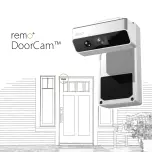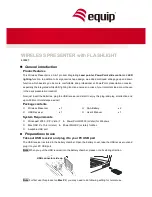
FRAMOS Industrial Depth Camera D400e Series - User Manual
Version 1.0.0 from 2020-06-30
18 of 41
The maximum allowed operating temperature of the camera is defined as the temperature
measured on the camera housing on the back side of the case, as shown in the figure above.
Operating Temperature
Min.
Max.
Temperature of the case (measured on the back side of
the camera)
0 °C
60 °C
Table 17 – D400e Operating Temperature
Exceeding the maximum operating temperature defined in the table above can lead to permanent
damage of the camera. The thermal dynamic of the camera is relatively slow due to the mass of
the housing and its internal construction. Therefore, more than 1.5h of steady operation under an
unchanged ambient condition, is necessary for the camera to reach the thermal steady state.
The camera operator should be aware of the camera settings that affect power consumption
(framerate, laser usage, …), the power supply options and environmental conditions, to assure that
the camera remains in a safe temperature range at all time. Examples of using appropriate heatsinks
are discussed in the following chapter.
4.2
Operating Conditions for Different Temperatures
Depending on the ambient conditions, the camera can either operate without any additional heat
dissipation element or with an adequate heatsink attached. The allowed maximum ambient
temperatures are given for different operating modes of the camera, to indicate at which
configuration the camera can run in several application use cases.
Use case:
Description:
Typical1
Power supply: M8, 12V
Exposure time: 5 ms
Framerate: 30 fps
Laser projector power: 150 mW
Typical2
Power supply: M12, PoE
Exposure time: 5ms
Framerate: 30 fps
Laser projector power: 150mW
Max1
Power supply: M8, 12V
Exposure time: 30 ms
Framerate: 30 fps
Laser projector power: 360 mW
Max2
Power supply: M12, PoE
Exposure time: 30 ms
Framerate: 30 fps
Laser projector power: 360 mW
Table 18 – Operating Conditions for Different Temperatures
















































